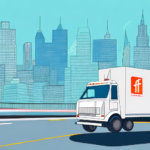Finding the Right Last Mile Logistics Providers for Your Business
In today's fast-paced business environment, last mile logistics plays a pivotal role in ensuring customer satisfaction and business success. The last mile refers to the final step of the delivery process, from the distribution center to the customer's doorstep. This stage is critical as it directly influences the customer's perception of your brand. Selecting the right last mile logistics provider can differentiate your business from competitors and foster customer loyalty. Below, we delve into the key aspects of identifying and partnering with the ideal last mile logistics provider.
Understanding the Importance of Last Mile Logistics
The last mile is often the most expensive and complex part of the delivery process, accounting for up to 53% of total logistics costs[1]. It directly impacts customer satisfaction, as timely and accurate deliveries enhance the overall shopping experience. In a competitive market where customers expect fast and reliable delivery options, excelling in last mile logistics can provide a significant competitive advantage.
Key Factors to Consider When Choosing a Last Mile Logistics Provider
Experience and Expertise
Select a provider with a proven track record in last mile logistics within your industry. Their experience should reflect an understanding of your specific delivery needs, including the type and volume of goods, delivery routes, and service level requirements.
Infrastructure and Technology
Advanced technology is essential for efficient last mile operations. Providers should offer real-time tracking, route optimization, and seamless integration with your business systems. Technologies like GPS tracking and automated notifications can enhance transparency and improve customer satisfaction.
Reliability and On-Time Delivery
Reliability is crucial. Choose providers known for consistent on-time deliveries. Check their performance metrics and seek references to validate their reliability and service quality.
Cost and Value for Money
While cost is an important factor, value for money should be the primary consideration. Transparent pricing models and flexible billing options indicate a trustworthy provider. Remember, the cheapest option might not always deliver the best service.
Evaluating Provider Qualities for Optimal Performance
Flexibility and Scalability
Your logistics needs may evolve over time. Ensure that the provider can scale their services and adapt to changes in delivery volumes, routes, and customer expectations.
Customer Service Excellence
Exceptional customer service from your logistics provider can significantly enhance the customer experience. Responsive support teams that handle inquiries and resolve issues efficiently are invaluable.
Compliance and Risk Management
Ensure that the provider adheres to all regulatory requirements and safety standards. Proper risk management practices, including insurance coverage and safety protocols, protect both your business and your customers.
Leveraging Technology in Last Mile Logistics
Technology is revolutionizing last mile logistics, making operations more efficient and transparent. Key technological advancements include:
- Real-Time Tracking: Enables precise monitoring of deliveries, enhancing transparency and allowing proactive issue resolution.[2]
- Route Optimization: Utilizes algorithms to determine the most efficient delivery routes, reducing travel time and fuel costs.
- Automated Notifications: Keeps customers informed about their delivery status through emails or SMS, improving satisfaction.
Cost Evaluation and Maximizing Efficiency
Assessing the total cost of last mile logistics involves both direct and indirect expenses. Direct costs include transportation, labor, and equipment, while indirect costs may encompass inventory carrying costs and customer service-related expenses. To maximize efficiency and minimize costs:
- Optimize Delivery Routes: Implement route optimization to reduce travel time and fuel consumption.
- Automate Processes: Utilize technology to automate scheduling, tracking, and notifications, thereby reducing manual labor.
- Monitor Performance Metrics: Regularly track key performance indicators (KPIs) such as on-time delivery rates and delivery costs to identify improvement areas.
Future Trends in Last Mile Logistics
Staying ahead of industry trends is essential for maintaining a competitive edge. Emerging trends in last mile logistics include:
- Robotic and Autonomous Deliveries: The use of drones and autonomous vehicles is expected to increase, offering faster and more efficient delivery options.[3]
- Green Delivery Solutions: Sustainability is becoming a priority, with more providers adopting electric vehicles and eco-friendly practices to reduce their carbon footprint.
- Flexible Delivery Options: Customers are increasingly demanding flexible delivery schedules, including same-day, evening, and weekend deliveries.
Best Practices for Contract Negotiation with Providers
Negotiating effective contracts with last mile logistics providers ensures clear expectations and successful partnerships. Follow these best practices:
- Define Clear Delivery Requirements: Outline your specific needs, including delivery windows, volume, and service levels.
- Establish Service Level Agreements (SLAs): Detail performance metrics such as on-time delivery rates and quality standards to hold providers accountable.
- Ensure Transparent Pricing: Request a detailed breakdown of costs, including any additional fees for extra services or peak times.
Conclusion
Last mile logistics is a critical component of modern business operations, directly impacting customer satisfaction and loyalty. By carefully selecting a reliable and technologically advanced logistics provider, evaluating key factors and qualities, and staying informed about emerging trends, businesses can optimize their delivery processes. Implementing these strategies will not only enhance operational efficiency but also provide a superior customer experience, driving long-term success.




















